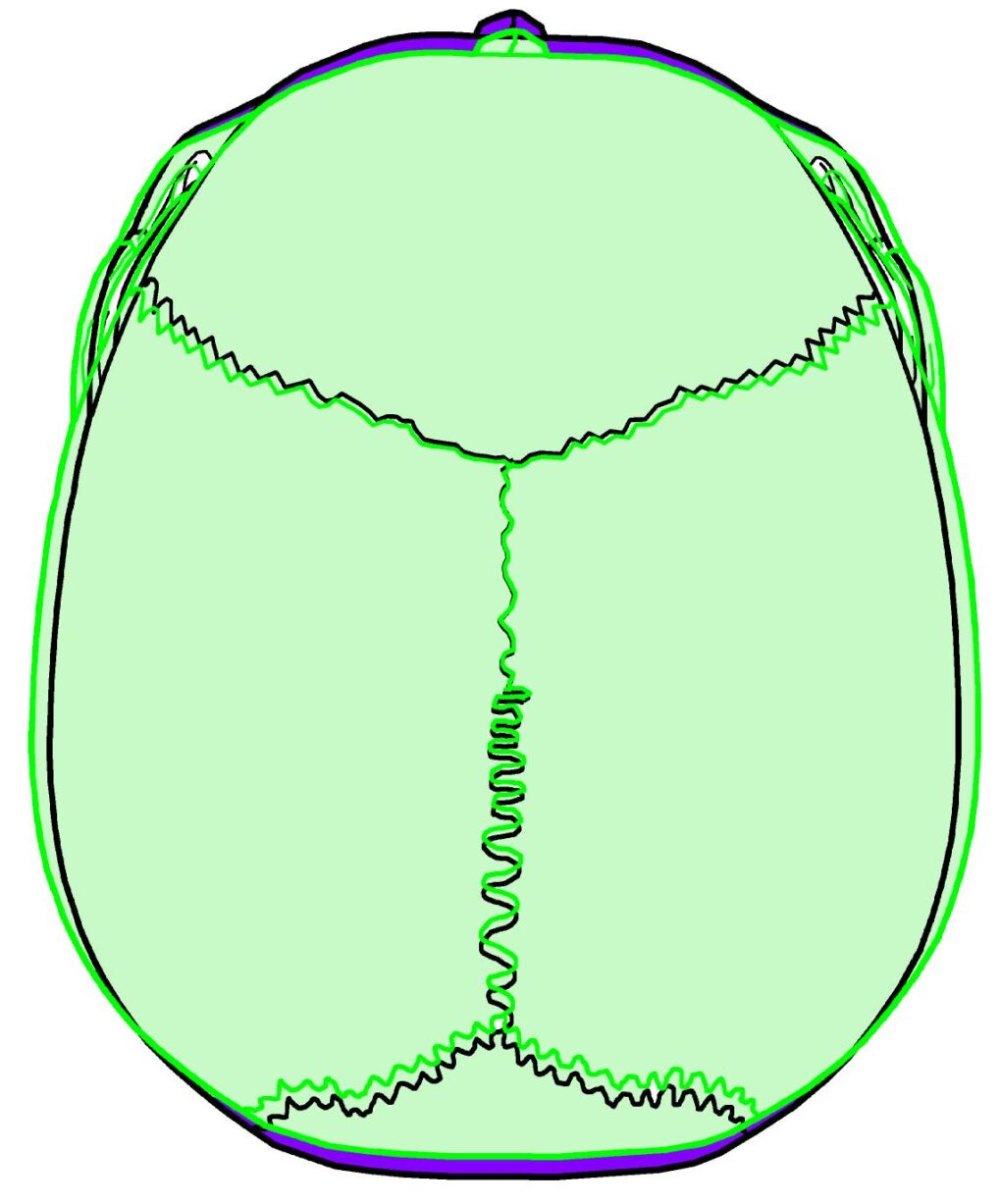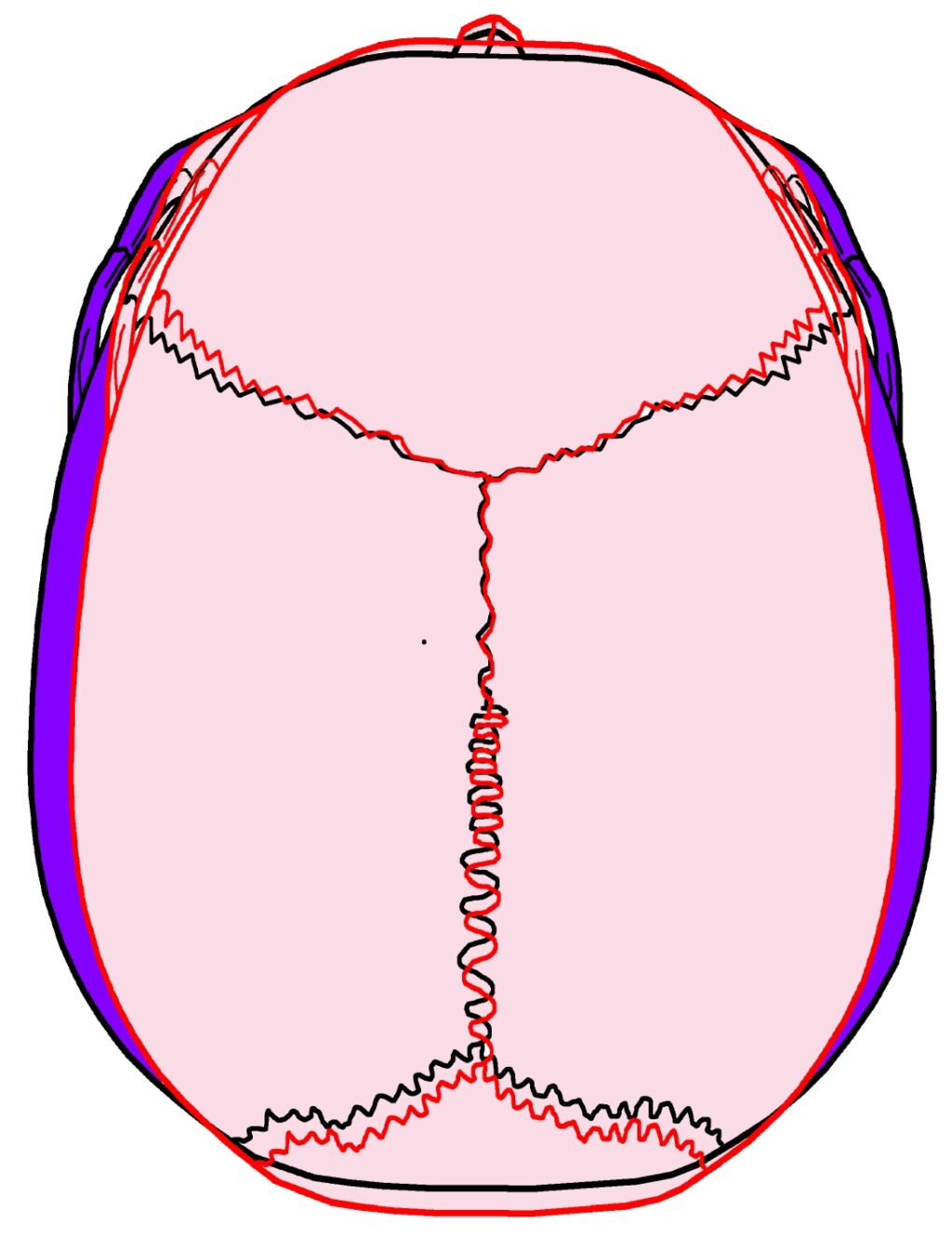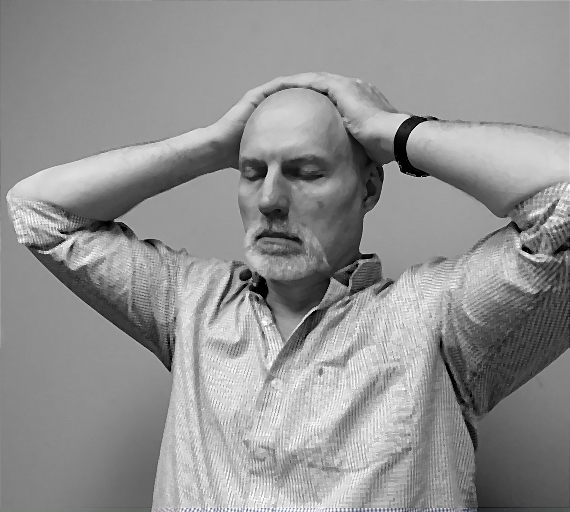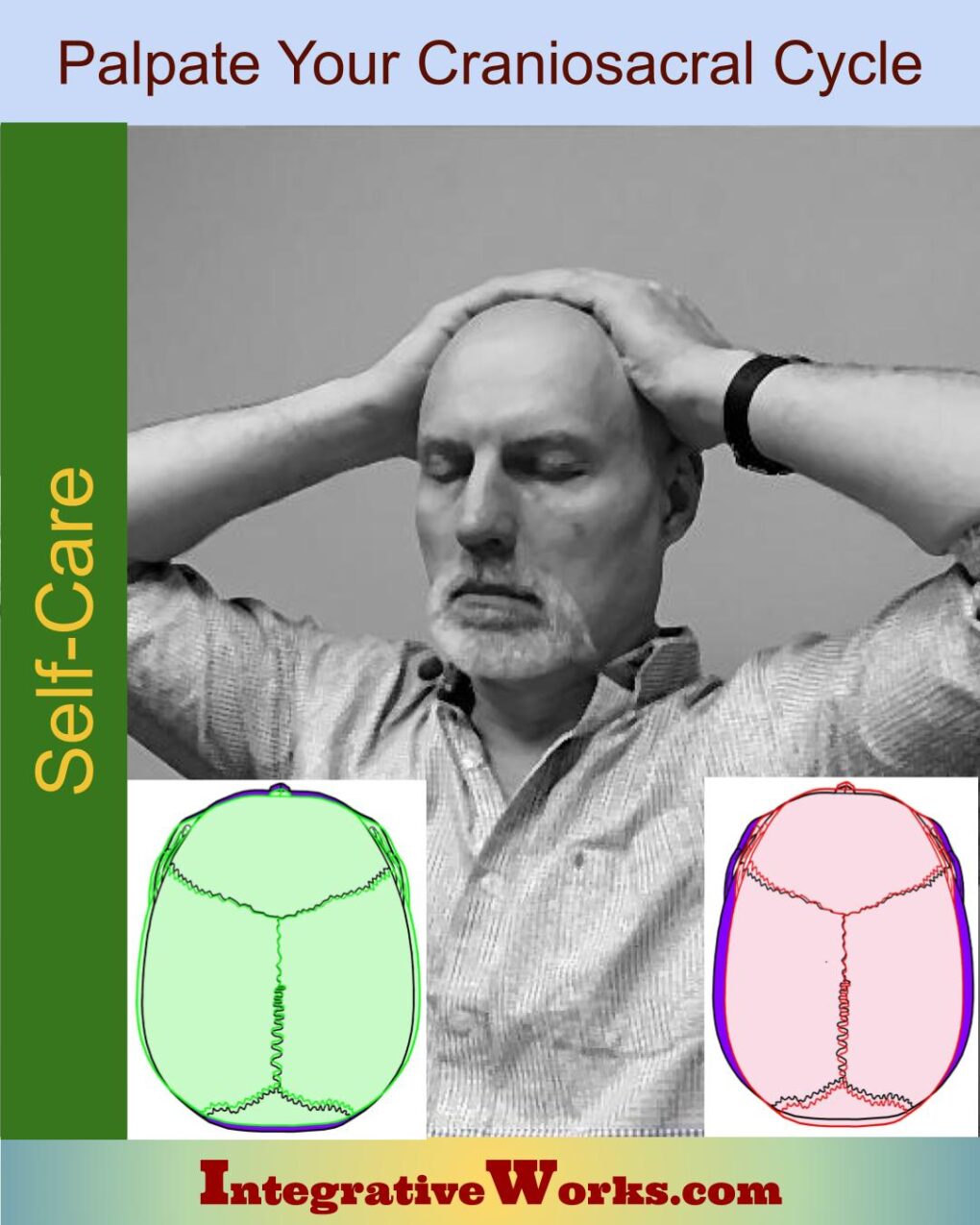This post offers you a simple way of palpating your craniosacral cycle. It isn’t magical and doesn’t require some special metaphysical insight. I’ve taught hundreds of people to palpate their craniosacral cycle. That includes students who took classes from other craniosacral courses and never felt the cycle. Some students took a few tries to feel it. Some students were distracted and overwhelmed by the class’s commotion but felt their cycle quietly in private.
This shift is associated with the dynamics of the flowing cerebrospinal fluid. It is commonly referred to as a wave or tide. Craniosacral practitioners speak of the “long tide,” “mid-tide,” or “cranial impulses.” Some people are not specific and simply refer to the craniosacral cycle.
Overview of Motion

a process of expansion and increase in pressure.

a process of contraction and decrease in pressure.

Palpating Your Craniosacral Cycle
When I am teaching students, they want to feel the cycle right away.
I have them sit quietly in a chair. It is helpful to be upright as the motion has better balance and amplitude. Also, it is helpful if your head is over your shoulders. And, your shoulders are over your pelvis. And your feet are squarely on the floor. The ones that do this get it more quickly.
Then, I have them place their hands on their heads so that the fingers are laced on top, and the heel of the hand touches the tops of the ears. I think having hair actually made this easier.
Focus on touching the skin without pressing into the bone. One practitioner referred to buoyancy in this touch. The hand needs to float on the skin without pressing the skin into the bone. Especially focus on this touch above the ears.
Most people notice that when they maintain this buoyant touch, their hands are moving. Pay attention to the heels of the hands in relationship to each other. You’ll notice that they slowly move toward and away from each other. Some notice little hiccups in that movement. That’s the craniosacral cycle.
Some feel the cranial impulse, which is 6-10 seconds. The complete mid-tide cycle averages around 50 seconds. I find this to be the easiest to feel.
Don’t worry if you only feel a little movement or part of the cycle. Many feel it right away, but some students don’t really feel anything until the 3rd or 4th class.
Tips for Feeling the Cycle
Sensory Perception Varies.
Perception varies from person to person. Knitters, gamers, and make-up artists tend to have better fine motor skills than framing carpenters, movers, and bakers. If you don’t use your fine motor skills a lot, give yourself a little time to adjust. Also, people who are tired or sick are less sensitive than rested and well-regulated people. I’ve noticed this in my own practice. I often start a session by palpating the cycle. This tells me how perceptive I am and helps me adjust my sensitivity.
Shift to the Right
This is a spatial activity. That means that the right side of the brain controls it. The left brain will usually take control when it can. There are volumes written on shifting to the right side of the brain, but here are a few things that help. First, stop talking to yourself. Talking is a left-brained activity. Stop naming things and focus on their shape. Secondly, do something that your left brain has trouble doing. Skip rope, Juggle. Trace seven emojis on your low back. Take a minute to try to draw a portrait that is upside down. You don’t have to do it well. You have to quit seeing symbols and start seeing shapes.
Rotate Your Focus
20 years into doing cranial work, I learned a great trick. During a polyvagal theory class, they spoke of how mothers naturally rotate their attention in 50-second cycles. They suggested that we do the same thing. It seems counter-intuitive but really works.
Focus on your hands for a bit. Focus on your breathing for a bit. Focus on the shape of the chair you are using. Focus on your hands again. Focus on the shape of your socks. Focus on how lightly your hands are touching. Focus on the stillness of the room. Keep rotating.
Weirdly, whenever I feel distracted and have trouble focusing, I start rotating. It improves my perception greatly. I often feel the cycle when I have rotated to focus on the back of my shirt. Yeah, I don’t get it, but it is amazing.
There’s More
The cycle, or tide, creates a wave that is palpable anywhere in the body. If you felt it in your head, try to feel it on your hips or thighs. Try separating it from the motility of breath in your rib cage. Try it on someone else. Many people find it easiest to feel on the thighs, where the motion is greatest. Also, have them lay on their back and put your hand behind their head. Feel that bump at the base of their head. Does it creep up and down in your hand?
I’d love your feedback on how this works for you and any suggestions you might have.
Email me at integrativeworks@gmail.com.
Support Integrative Works to
stay independent
and produce great content.
You can subscribe to our community on Patreon. You will get links to free content and access to exclusive content not seen on this site. In addition, we will be posting anatomy illustrations, treatment notes, and sections from our manuals not found on this site. Thank you so much for being so supportive.
Cranio Cradle Cup
This mug has classic, colorful illustrations of the craniosacral system and vault hold #3. It makes a great gift and conversation piece.
Tony Preston has a practice in Atlanta, Georgia, where he sees clients. He has written materials and instructed classes since the mid-90s. This includes anatomy, trigger points, cranial, and neuromuscular.
Question? Comment? Typo?
integrativeworks@gmail.com
Interested in a session with Tony?
Call 404-226-1363
Follow us on Instagram

*This site is undergoing significant changes. We are reformatting and expanding the posts to make them easier to read. The result will also be more accessible and include more patterns with better self-care. Meanwhile, there may be formatting, content presentation, and readability inconsistencies. Until we get older posts updated, please excuse our mess.


